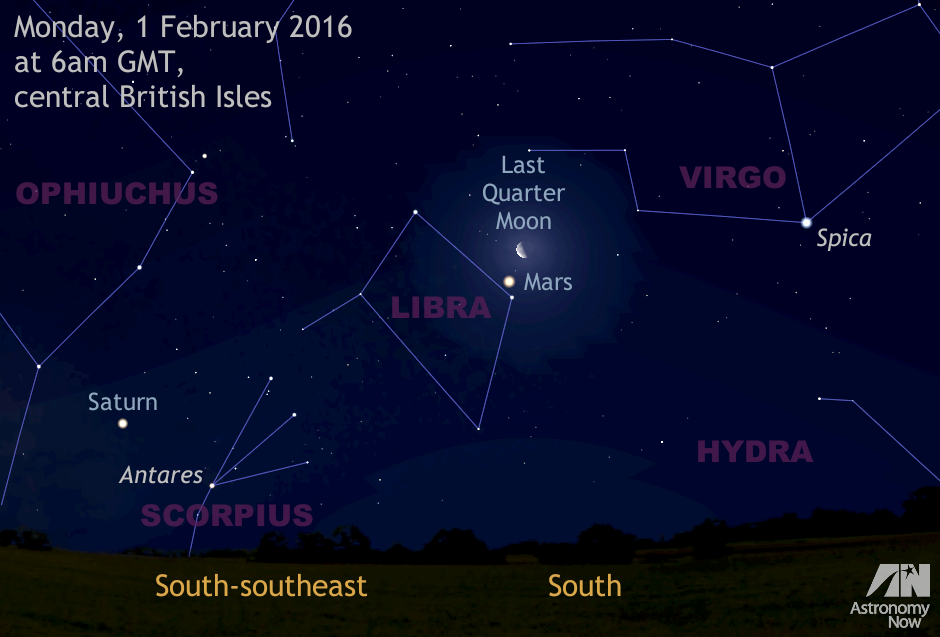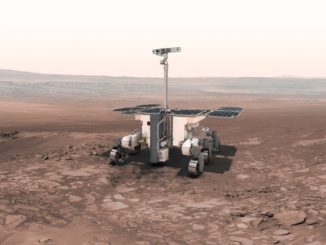
Our former article shows you when, where and what to look for, but for added clarification the waning Moon is passing by each of the planets in turn. First it was Jupiter, on the night of 27/28 January. Next up is ochre-coloured planet Mars, found just 2½ degrees to the lower left of the last quarter Moon around 6am GMT on Monday, 1 February 2016.
Mars reaches opposition in the constellation Scorpius on 22 May 2016, but the planet is closest to Earth on the evening of 30 May when its apparent size is 18.6 arcseconds. However, on 1 February Mars is in the constellation Libra and somewhat more distant (1.37 astronomical units, or 127 million miles / 205 million kilometres), so its 90 percent illuminated disc spans just 6.8 arcseconds. This means that a telescope magnifying in excess of 260x is required to make it appear the same size as the adjacent Moon looks to the unaided eye.
It your sky is clear very low to the south-southeast in the British Isles around 6am GMT on Monday, 1 February, also look for ringed planet Saturn just 7½ degrees (about a third of the span of an outstretched hand held at arm’s length) to the upper left of star Antares in Scorpius. You may need to wait until about 6:30am for the pair to rise enough to be seen clearly — but don’t leave it too long as twilight is getting bright. Our updated interactive Almanac can give you all the viewing information you need, wherever you may be in the world.
Inside the magazine
Find out more about how to observe the Moon, Mars and the other planets in the night sky in the February 2016 edition of Astronomy Now.
Never miss an issue by subscribing to the UK’s biggest astronomy magazine. Also available for iPad/iPhone and Android devices.




